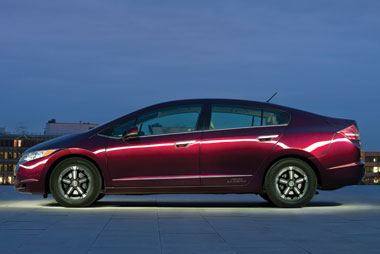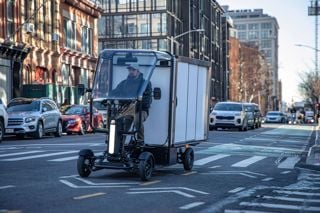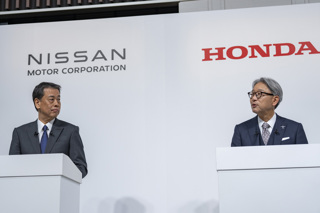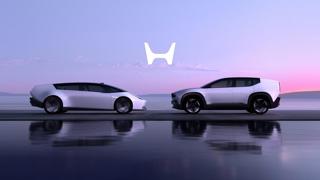Review
On the way to drive Honda’s FCX Clarity I pass an electric car on the M25. Its stickering states it is ‘on test’. It’s actually on the back of a trailer. Electric cars have their limitations.
Yet John Kingston, government affairs and environment manager for Honda UK, describes the FCX Clarity as an electric vehicle.
Only the FCX Clarity is different, as its electric motor is powered by a fuel cell.
It uses hydrogen and converts it to electricity via clever chemistry within a box about the size of a mid-sized suitcase.
Kingston isn’t saying how much it’s cost to produce the 35 FCX Clarity models driving the streets of Japan and California right now.
They’re leased to companies and individuals for $600 – or around £382. That’s an absolute bargain, given each is rumoured to be worth a number containing six zeros.
Costs keep dropping though, with a number of manufacturers signing a letter of intent to have fuel cell cars ‘commercially available by 2015.
Honda will produce 300 FCXs by 2011, with fleets in particular being the useful customers as they’re easy to control, monitor and predict.
Drivers wouldn’t need any additional training, as a drive in the FCX reveals it’s as simple as any automatic car to drive – if much quieter thanks to its electric motor.
The FCX Clarity brings with it its own unique challenges, too.
Fuelling it with hydrogen might get around the slow charge times and limited battery range of plug-in electric vehicles, but when was the last time you saw a fuel station selling hydrogen?
Japan, California and Germany are taking tentative steps to introduce hydrogen on fuel station forecourts, but until then the FCX Clarity’s range is limited to 135 miles from a hydrogen pump; 270 miles in total.
Forget the availability of pumps and look at how hydrogen is produced and the argument is muddied still further.
Currently over half the world’s hydrogen is created via steam reforming, which uses huge quantities of CO2 producing natural gas. All that does is shift greenhouse CO2 gas production up the supply chain.
Honda offers potential solutions, chiefly based around the Home Energy Stations and hydrogen created from clean electricity from solar, wind, hydro and nuclear.
At the home one system uses grid electricity combined with solar power mated to a water electrolyser, another taking natural gas and reforming it into hydrogen.
Although the latter requires natural gas, Honda claims it would be incorporated into the home’s heating and hot water system to reduce emissions by 30% and energy costs by as much as 50%.
Hydrogen produced by clean electricity and water electrolysis is 100% renewable, but a seismic shift in hydrogen creation would be required – with such production currently accounting for only 2% of hydrogen.
Kingston admits that the FCX Clarity is part of Honda’s suite of future mobility solutions, suggesting that conventional electric cars are better suited to short, city centre journeys, fuel cells being used for longer journeys.
Kingston also admits that conventional models of car ownership and use might have to evolve to suit new technologies like fuel cell vehicles.
Until then, the FCX Clarity will be just another electric vehicle, hindered not by slow charging batteries, but the limited availability of a hydrogen fuelling network.
Leaving the FCX Clarity drive event there’s a covered car trailer in the car park. The FCX Clarity might represent a potential future, but it’s arrived earlier than the infrastructure to support it. And when it might actually come is impossible to predict.




















Login to comment
Comments
No comments have been made yet.